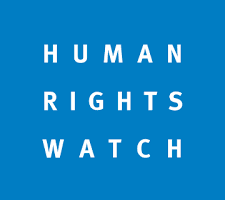
From The Committee to Protect Journalists:
More than three quarters of the 99 journalists and media workers who perished worldwide in 2023 were killed in the Israel-Gaza war, according to a report published today by the Committee to Protect Journalists (CPJ).
CPJ’s report documents the highest number of deaths recorded by the organization since 2015—a stark indicator of the unprecedented number of journalists and media workers killed in the Israel-Gaza war. The vast majority (72) were Palestinian journalists killed in Israeli attacks on Gaza. In contrast, outside of that conflict, a total of 22 journalists and media workers were killed in 18 nations.
In December 2023, CPJ reported that more journalists were killed in the first three months of the Israel-Gaza war than have ever been killed in a single country over an entire year.
“Journalists in Gaza are bearing witness on the frontlines,” said CPJ Chief Executive Officer Jodie Ginsberg. “The immense loss suffered by Palestinian journalists in this war will have long-term impacts for journalism not just in the Palestinian territories but for the region and beyond. Every journalist killed is a further blow to our understanding of the world.”
CPJ has raised concerns about the apparent targeting of members of the media by the Israel Defense Forces and is investigating whether a dozen journalists killed in the Israel-Gaza war were deliberately targeted by Israeli soldiers. As shown by CPJ’s May 2023 “Deadly Pattern” report, the Israeli military has a long record of killing journalists with impunity, with at least 20 journalists killed over 22 years and no one held accountable for their deaths.
CPJ has demanded swift, transparent, and independent investigations into all journalist killings by the IDF and has repeatedly cautioned warring parties that journalists are civilians under international law and deliberately targeting them is a war crime. Similarly, CPJ has said that Israel must comply with the International Court of Justice’s recent order to ensure the preservation of evidence, a critical function of journalists, as they are frontline witnesses whose work has previously been considered as evidence in tribunals.
Excluding the deaths in Israel, Gaza and Lebanon, killings dropped markedly in 2023. Nonetheless, CPJ’s 2023 data shows that targeting of journalists remains constant in nations including the Philippines, Mexico and Somalia, countries that have proven deadly for journalists over decades. Even where the overall number of journalist killings have declined, non-lethal attacks persist and journalists continue to be jailed in record numbers, a key indicator of press freedom conditions.
“The near-record high number of journalist killings in 2023 clearly indicates that we must work collectively to ensure that journalist killers are brought to justice, that a culture of safety prevails in newsrooms, and that the public’s right to be informed is protected from those whose power is threatened by the scrutiny of reporting,” said Ginsberg.
The lower numbers of killings do not necessarily indicate increased safety. While killings in Mexico fell from a record of 13 in 2022 to two in 2023, journalists continue to face attacks, harassment, threats, and abduction amid corruption and organized crime in one of the world’s deadliest countries for the press. Compounding the situation, government agencies spy on reporters and rights defenders, and a significant number of journalists have had to leave their homes, and abandon their professions, due to violence.
From 1992 to 2023, 94 of the 96 journalists killed in the Philippines were murdered in connection with their work, with radio journalists particularly vulnerable in the nation.
In Cameroon, the murder of two journalists, Martinez Zogo and Jean-Jacques Ola Bebe, occurred in the midst of a succession battle for power between government factions. Ukraine’s wartime decrease in journalist killings, from 13 work-related deaths in 2022 to two in 2023, was a response to improved training and safety awareness along with the stabilization of combat zones.
Around the world, existing mechanisms to protect journalists’ safety routinely fail to shield the press, and journalists’ killers regularly evade justice as local investigations are delayed, botched, or simply never commence.







Comments